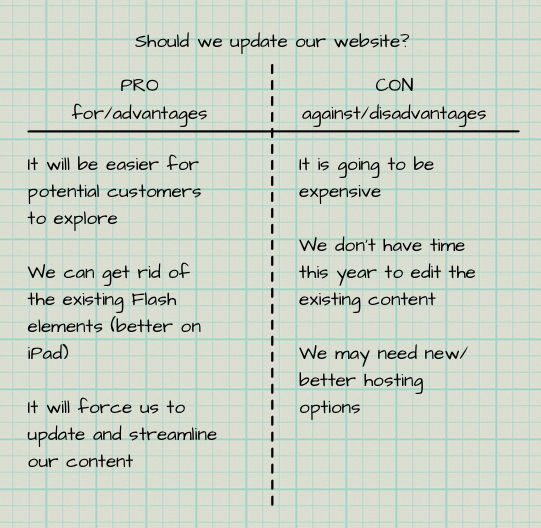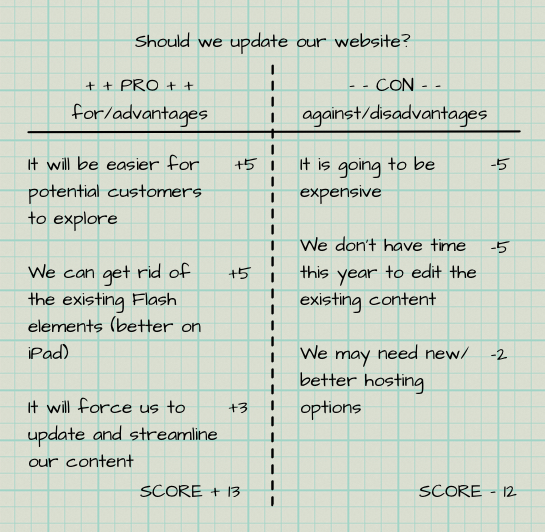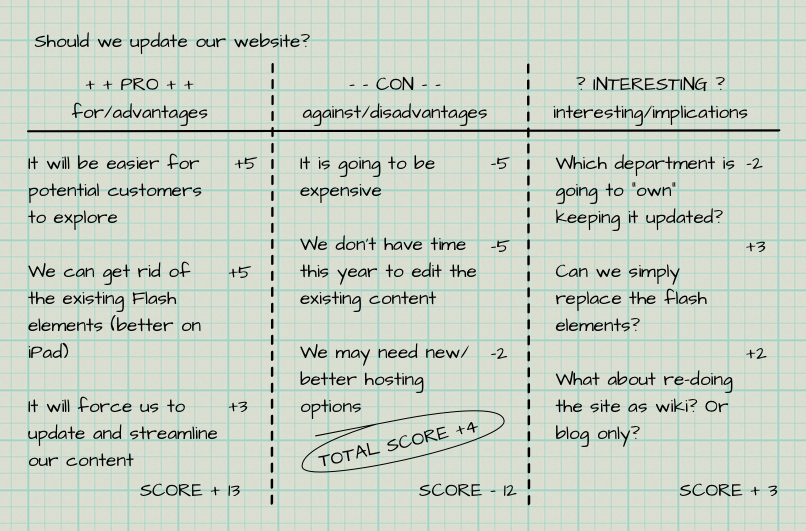We make decisions all the time, big ones and small ones, easy and challenging. Making the right choice can be obvious, but sometimes, it requires time invested in thought. Luckily, we have simple tools to help.
(1) Pro & Con List
First is the basic Pros and Cons list. The Pro and Cons lists the good and bad aspects of an idea you are considering.

If listing alone doesn’t help you make the decision, consider a Pro and Con list with scores.
(2) Scored Pro & Con List
You can add a numerical weight of importance to your pro/con list. For example, a pro with a weight of 5 is more important than a pro (or con) of 1.
Scoring your list changes it from ‘which side has more thoughts’ to ‘which side is more critical.’ Add up your scores and see which side comes out stronger.
 (3) The PMI Method
(3) The PMI Method
A third way to examine choices is the PMI Method, invented by Edward de Bono. PMI stands for Plus, Minus, and Interesting. It takes the Scored Pro & Con a step further by forcing us to consider “what is interesting” about the choice.
- Plus are the pros. What’s good about the idea.
- Minus are the cons, the bad points of the idea. And finally,
- Interesting. What is interesting? What are the possibilities?
This chart is especially handy when brainstorming and you have ideas that are not a pro nor a con. Rather, ideas that are interesting to think about. To calculate your PMI score, add up your (Plus) + (Minus) + (Interesting) scores. Items in the “interesting” column can score as a plus or a minus depending on the implication of the thought.
 In the example above, the plus score added up to +13, the minus -12, and the interesting column was +3. Added together, this idea scores a +4. This “total score” comes in especially handy when you’re comparing multiple options. Where should we relocate our offices: Seattle, Orlando or New York City? You would do a pro, con/minus, interesting for each city and see which earns the highest score.
In the example above, the plus score added up to +13, the minus -12, and the interesting column was +3. Added together, this idea scores a +4. This “total score” comes in especially handy when you’re comparing multiple options. Where should we relocate our offices: Seattle, Orlando or New York City? You would do a pro, con/minus, interesting for each city and see which earns the highest score.
While it is common to explain a pro or con of something, we don’t usually consider what is interesting about the idea. Using PMI encourages exploring possibilities that arise from thinking about it from three directions. It enlarges our view of the situation.
